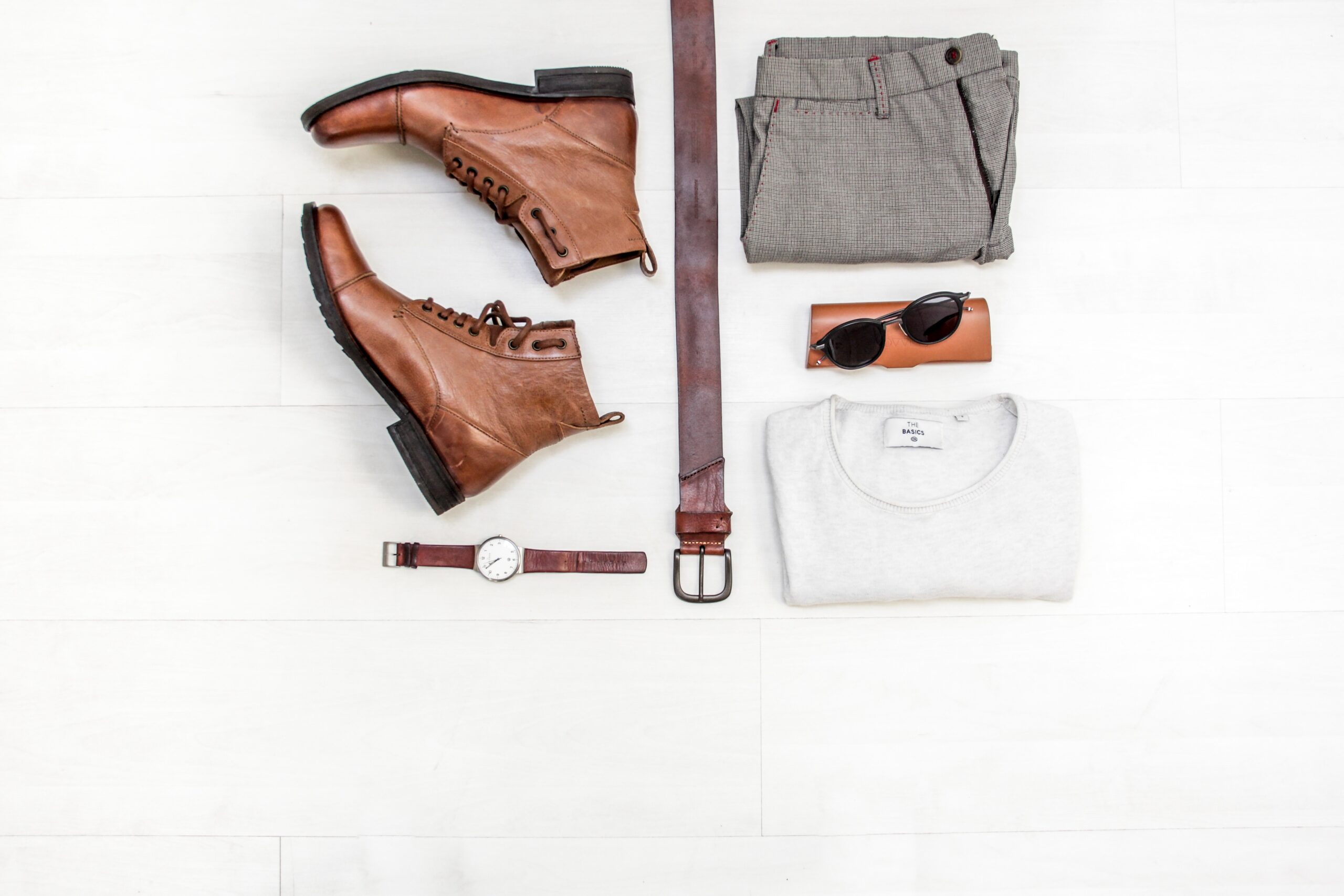Whether you’re a seasoned outdoors enthusiast or just someone who enjoys blending into the wilderness, choosing the right size of camouflage clothing can be a key factor in your overall comfort and effectiveness. From hunting trips to military operations, finding the perfect fit can enhance your camouflage experience. To help you on your quest for the ideal size, we’ve compiled a few handy tips that will ensure you’re ready to tackle any terrain, while blending effortlessly into your surroundings. So, read on to discover the secrets behind selecting the perfect fit for your next outdoor adventure.

Understanding the Basics of Camouflage Clothing
Camouflage clothing is a type of clothing that is designed and patterned to blend in with the wearer’s surroundings, making them less visible to others. It is commonly used by hunters, military personnel, and outdoor enthusiasts. There are different types of camouflage clothing available, each with its own unique pattern and purpose.
Different types of camouflage clothing
There are various types of camouflage patterns used in clothing, and each pattern is designed to be effective in specific environments. Woodland camouflage, for example, features earthy tones and is most suitable for forested areas. Desert camouflage, on the other hand, consists of tan and light brown colors that blend well with arid environments. Other common patterns include digital camouflage, which uses pixelated designs, and snow camouflage, which is ideal for snowy conditions.
The purpose of camouflage clothing
The main purpose of camouflage clothing is to help the wearer blend in with their surroundings. This can provide several advantages in different scenarios. For hunters, camouflage clothing allows them to blend into their hunting environment, making it easier to approach game without being noticed. Military personnel use camouflage clothing to conceal their presence on the battlefield, making it harder for the enemy to spot them. Even in outdoor recreational activities such as birdwatching or wildlife photography, camouflage clothing can help minimize disturbance to the animals being observed.
The Significance of Proper Camouflage Clothing Sizing
Choosing the right size of camouflage clothing is crucial for comfort, mobility, and effective concealment. Ill-fitting clothing can hinder your movements and limit your ability to stay hidden.
Comfort and mobility
Camouflage clothing that is too tight can restrict your range of motion, making it difficult to perform tasks or move stealthily. On the other hand, clothing that is too loose can be cumbersome and could get caught on branches or other obstacles. Opting for the correct size ensures optimal comfort and freedom of movement, allowing you to focus on your activities without any discomfort.
Effective concealment and disguise
Properly fitted camouflage clothing enhances its effectiveness in concealing your presence. If the clothing is too large or baggy, it may create unnatural folds or creases that can make you more noticeable. Conversely, clothing that is too tight can create tension lines, disrupting the natural flow of the camo pattern. Choosing the right size ensures that the camouflage pattern aligns correctly with your body shape, maximizing its effectiveness in blending you into the environment.
How to Measure for Camouflage Clothing
To ensure the best fit for your camouflage clothing, it is essential to take accurate measurements. Here are some key measurements to consider:
Measuring the chest
To measure the chest accurately, wrap a tape measure around the fullest part of your chest, just under your arms. Make sure the tape measure is level and not too tight against your skin. Take note of the measurement in inches or centimeters, depending on the sizing chart available.
Measuring the waist
To measure your waist, wrap the tape measure around the narrowest part of your natural waistline. This is usually where your waist is the smallest. Again, ensure the tape measure is level and not too tight on your skin. Record the measurement for reference.
Measuring the inseam
The inseam measurement is essential when it comes to selecting the right size for pants or trousers. To measure it accurately, stand straight and measure from the crotch to the bottom of your ankle. This measurement will help you choose the appropriate length for your pants, ensuring a comfortable fit.
Taking your body type into consideration
In addition to the specific measurements, it’s also important to consider your body type when selecting camouflage clothing. Some individuals may have a more athletic build, while others may have a more relaxed or fuller figure. Taking your body type into account will help you find the right size that complements your physique, providing optimal comfort and concealment.
Camouflage Clothing Sizes for Men
Understanding the sizing charts for men’s camouflage clothing is essential to find the right fit. Each brand may have slight variations in their size charts, so it’s crucial to refer to the specific brand’s measurements when making a purchase.
Understanding men’s size charts
Men’s camouflage clothing tends to follow a standard size chart based on chest and waist measurements. When looking at a size chart, you will typically find numerical values that correspond to different chest sizes (e.g., 38″, 40″, 42″) and waist sizes (e.g., 30″, 32″, 34″). By referring to your chest and waist measurements, you can determine the size that aligns with your body dimensions.
Factoring in body shape and proportions
While the size charts provide a general guideline, it’s important to consider your body shape and proportions as well. Some individuals may have broad shoulders or a longer torso, which could affect the overall fit of the camouflage clothing. If you have unique proportions, you may need to try different sizes or consider brands that offer more tailored options to ensure a better fit.

Camouflage Clothing Sizes for Women
Women’s camouflage clothing often follows a different size chart from men’s, as women typically have different body proportions. Understanding the sizing charts and accounting for curves and form is crucial to finding the right fit.
Understanding women’s size charts
Women’s camouflage clothing often utilizes numerical sizes (e.g., 2, 4, 6) or alphabetical sizes (e.g., S, M, L) to denote different measurements. Similar to men’s size charts, these measurements are based on chest and waist sizes. However, women’s clothing may also consider hip measurements for a more accurate fit. Referring to the specific size chart provided by the brand will help you determine the most suitable size.
Accounting for curves and form
Women’s camouflage clothing should consider the natural curves of a woman’s body. Many brands provide additional information or guidance on how their clothing accommodates different body shapes. This may include details on whether the clothing is more fitted or relaxed around the waist and hips. Taking these factors into account will help you choose the appropriate size that flatters your curves while still maintaining optimal concealment.
Camouflage Clothing Sizes for Children
When purchasing camouflage clothing for children, it’s important to consider their growth and development. Children can quickly outgrow clothing, so selecting the right size is crucial for comfort and longevity.
Understanding children’s size charts
Children’s camouflage clothing often follows a size chart that takes into account their age or height. These size charts provide a range of measurements, ensuring a suitable fit for different stages of growth. It’s important to check the specific brand’s size chart and compare it to your child’s measurements to find the best size.
Adjusting for growth and development
When selecting camouflage clothing for children, it’s wise to choose a slightly larger size to allow room for growth. Children often have growth spurts, and having a bit of extra room in their clothing ensures longevity and saves you from needing to replace their clothing frequently. However, be cautious not to choose a size that is too large, as oversized clothing can hinder your child’s mobility and concealment.

Choosing the Right Camouflage Footwear Size
Properly fitting camouflage footwear is essential for comfort and performance in various outdoor activities. Here are some tips for selecting the right size:
How to measure your foot size
To measure your foot size accurately, stand with your full weight on a piece of paper or a tape measure placed on the floor. Trace the outline of your foot with a pencil, making sure the pencil is held vertically and in contact with your foot. Measure the distance from the tip of your longest toe to the back of your heel. This measurement will help you determine the correct length of footwear.
Understanding footwear size charts
Footwear size charts often rely on numerical values corresponding to foot length or the size of the foot in centimeters or inches. By comparing your foot measurement to the size chart provided, you can find the appropriate size for your camouflage footwear. It’s important to note that different shoe brands may have slight variations in their sizing, so it’s always recommended to refer to the brand’s specific size chart.
Considerations for Layering Camouflage Clothing
Layering is commonly used in outdoor activities to provide insulation, protect against the elements, and adapt to changing conditions. When layering camouflage clothing, it’s important to consider the sizing of each layer to ensure proper functionality and comfort.
Accounting for added bulk
Layering camouflage clothing can add bulk and affect the overall fit of the clothing. When selecting base layers, consider choosing a size that provides a snug fit to ensure effective moisture-wicking and insulation. Mid-layers, such as fleece or sweaters, should be selected based on your desired level of insulation and comfort. Ensure that there is enough room for comfortable movement without compromising the effectiveness of the camouflage pattern.
Selecting appropriate sizes for base and outer layers
The base layer is the layer closest to your skin and should provide a comfortable and breathable fit. Ensure that it wicks away moisture effectively and does not cause irritation or chafing. The outer layer, on the other hand, should accommodate the additional layers underneath without being too tight. It should allow freedom of movement and provide protection against wind, rain, or other elements. Selecting the right size for each layer ensures optimal comfort, functionality, and concealment.
Shopping for Camouflage Clothing Online
Shopping for camouflage clothing online provides convenience and a wide range of options. However, it’s important to consider certain factors to ensure a successful purchase.
Assessing size charts and descriptions
When shopping for camouflage clothing online, thoroughly review the provided size charts and descriptions. Pay attention to any specific sizing information provided by the brand and compare it to your own measurements. Some online retailers may also include customer reviews that can provide insights into the accuracy of the sizing. Take the time to read through reviews to get a better understanding of how the clothing fits and whether adjustments need to be made.
Checking return and exchange policies
Before finalizing your online purchase, familiarize yourself with the retailer’s return and exchange policies. There may be instances where the sizing may not be as expected, or the clothing may not fit perfectly. Knowing the return and exchange options will give you peace of mind and allow you to make any necessary adjustments without hassle.
Addressing Common Sizing Challenges
When it comes to selecting camouflage clothing, there are a few common challenges that individuals may encounter. Here are some tips for handling these challenges:
Dealing with in-between sizes
It’s not uncommon to fall between two sizes, especially if you have measurements that don’t align perfectly with the size chart. In these situations, it’s best to choose the larger size. You can always make minor alterations or adjustments to the clothing to achieve a better fit. Additionally, you can also refer to the brand’s specific sizing information or reach out to their customer service for guidance on selecting the right size.
Choosing between comfort and form-fitting styles
Camouflage clothing comes in various styles, including both comfort-focused and form-fitting options. The choice between the two depends on personal preference and the intended use of the clothing. Comfort-focused styles tend to have a looser fit, providing more freedom of movement. However, if you prefer a more streamlined and form-fitting look, consider selecting a size that aligns closely with your measurements. Keep in mind the impact this may have on mobility and comfort.
Adjusting for muscle or weight changes
If you anticipate muscle or weight changes in your body, it’s advisable to choose camouflage clothing that allows for some flexibility. Clothing with adjustable features, such as elastic waistbands or drawstrings, can accommodate slight variations in body size. Additionally, considering clothing materials with moderate stretch can also provide a better fit and adapt to changes in your body shape.
In conclusion, understanding the basics of camouflage clothing and selecting the right size is crucial for comfort, mobility, and effective concealment. Taking accurate measurements and considering your body type will help you find the appropriate size that suits your needs. Whether you’re shopping for men’s, women’s, or children’s camouflage clothing, referring to the specific size charts and guidelines will ensure a better fit. By selecting the right size and considering layering and other factors, you can fully enjoy the benefits of camouflage clothing in your outdoor activities.

